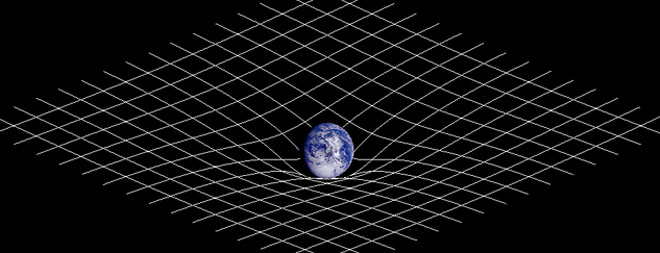Have Gravitational Waves from the Primordial Universe Been Detected?

via Wikipedia | http://bit.ly/1dfT4Dg
(Inside Science) -- Friday was Albert Einstein’s birthday, and Pi Day. Today is St. Patrick's Day. But this day may be remembered many years from now in the world of physics for something far more momentous. Researchers from the BICEP2 experiment in the South Pole are announcing evidence for the first direct detection of gravitational waves, the last major unconfirmed prediction of Einstein.
The scientific talks are going on right now. A press release has just been posted here. Starting at 11:55 AM U.S. Eastern Time today, the Harvard-Smithsonian Center for Astrophysics will hold a press conference (link to live streams at http://www.cfa.harvard.edu/news/news_conferences.html).
Almost exactly 100 years ago, Einstein developed general relativity, his last, and what many consider to be his most important, contribution to science. You can read our Inside Science Minds piece by Joey Key and Nico Yunes for an introduction to General Relativity.
To recap here, general relativity describes the universe at large scales, of planets, stars, galaxies, clusters of galaxies, and beyond. Quantum mechanics describes the universe at small scales, such as atoms and subatomic particles. For years, theorists have been trying to reconcile both into a single, unified theory of physics.
General relativity considers the universe as having three dimensions of space and one of time. Recent theories suggest space may have many more dimensions, and some theories even suggest multiple dimensions of time, but we don’t have to worry about that right now.
In general relativity, one can describe the motion of all objects in the universe as moving through three dimensions of space and one of time. This four-dimensional picture can be complicated to visualize even for experts. In a simplified picture, imagine spacetime as a flat canvas. Objects with mass, such as the Sun, distort the canvas so that other objects traveling in its vicinity appear to travel in a curved path. So gravity arises from a curvature of spacetime. This is very different from Newton’s laws, which consider gravity as an invisible force that acts instantly between two objects; this instantaneous, invisible action-at-a-distance was dissatisfying even in Newton’s time.
General relativity ultimately provides a more satisfying picture of gravity, and proved its worth by predicting things that Newtonian law couldn’t, such as the complex motions of Mercury when it comes close to the sun.
When an object with mass accelerates, general relativity predicts that it will create gravitational waves, which are ripples in spacetime. Usually these ripples are very small, but they are larger for things like colliding black holes. Passing through the Earth, these ripples would actually cause our planet to expand and contract very slightly! But that’s the problem. They are usually too tiny.
A number of experiments have been trying to detect gravitational waves. Making it even more challenging to detect them is that so many other effects such as seismic vibrations on the Earth have to be filtered out.
Some of these experiments look for the illusive waves by examining the imprints of radiation in the early universe. The early universe is believed to have undergone a period of extremely rapid expansion known as inflation. During this period, inflation would have amplified very weak gravitational waves from the early universe, and these amplified gravitational waves would have influenced patterns in the very first light reaching us from the edge of the observable universe, which we now see as microwave radiation. Many experiments, including the BICEP2 experiment whose researchers will be making an announcement today, have been looking for telltale influences of gravitational waves on the cosmic microwave background radiation. Any observations of gravitational waves would need to be scrutinized by peers, and ideally replicated and confirmed by multiple experiments.
The detection of gravitational waves would be exciting to physicists not only because it would be a confirmation of Einstein’s predictions in General Relativity. While this is a cause for celebration, physicists have suspected that gravitational waves have existed, and they have been detected indirectly, through the motions of pulsars. What is truly exciting to physicists is that gravitational waves can also provide valuable information about the early universe, including the strange rapid expansion of the universe that was inflation and, potentially even more exciting, the fundamental properties of gravity. The information from gravitational signals can rule out a number of major models of the early universe and may provide insights into the very nature of gravity, helping physicists on their quest to unify gravity and quantum mechanics.
So stay tuned! Inside Science will continue its coverage throughout the day. For now, if you’re looking for more background information, check out Sean Carroll's Preposterous Universe blog and some earlier coverage in Sky and Telescope.

